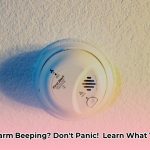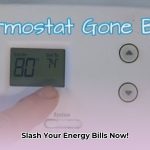Understanding Indoor Propane Heater Safety
Using a propane heater indoors can provide efficient warmth, but it’s crucial to understand and address the potential safety risks. These risks primarily include carbon monoxide (CO) poisoning, oxygen depletion, and fire hazards. CO is a colorless, odorless gas produced during propane combustion. Inadequate ventilation can lead to dangerous CO buildup, potentially causing serious health issues or even fatalities. Simultaneously, propane heaters consume oxygen, which, in poorly ventilated areas, can lead to oxygen depletion and breathing difficulties. The flammable nature of propane also presents a fire risk if the heater is placed near combustible materials.
Choosing the Right Propane Heater
Selecting the appropriate heater for your needs involves understanding the different types available:
Vented vs. Ventless Heaters
-
Vented (Direct-Vent): These heaters are generally considered safer for indoor use. They utilize a dedicated pipe system to vent exhaust gases directly outdoors, minimizing indoor air quality issues. However, professional installation is typically required.
-
Ventless (Unvented/Catalytic): Ventless heaters release combustion byproducts directly into the room. While convenient and portable, they pose a significantly higher CO risk. Maximize ventilation if using a ventless heater indoors, and consider the ongoing debate regarding their long-term safety even with ventilation. Some experts suggest that individuals with respiratory sensitivities might experience discomfort even with proper ventilation. Ongoing research continues to explore the long-term effects of ventless heaters on indoor air quality.
Other Heater Types
- Radiant Heaters: Emit infrared heat directly, ideal for targeting specific areas.
- Convection Heaters: Warm the surrounding air, which then circulates throughout the room.
- Blue Flame Heaters: A type of ventless heater that burns cleaner and more efficiently. While some studies suggest they produce fewer byproducts, the debate continues regarding their long-term impact on indoor air quality.
- Forced-Air Heaters: Use a fan for rapid heat distribution.
- Wall-Mounted Heaters: Offer space-saving, consistent warmth, and are often vented.
| Feature | Vented | Ventless | Radiant | Convection | Blue Flame | Forced Air | Wall-Mounted |
|---|---|---|---|---|---|---|---|
| Ventilation | Required, exhaust piped outdoors | Not Required, indoor exhaust | N/A | N/A | N/A | N/A | Usually Vented |
| Safety | Generally safer due to exhaust | Careful monitoring essential | Moderate | Moderate | Moderate | Moderate | Moderate |
| Heat Distribution | Varies, can be directional or widespread | Varies, can be directional or widespread | Directional, focused heat | Even distribution | Varies | Rapid, even | Typically directional |
| Portability | Less portable, often fixed | More portable | Moderate, some portable | Moderate, some portable | Moderate | Moderate | Not portable |
| Installation | Professional installation | DIY possible | Easy setup | Easy setup | Easy setup | Easy setup | May require professional help |
Safe Ventilation Practices
Proper ventilation is paramount when using a propane heater indoors. Follow these steps:
- Cross-Ventilation: Open windows and doors on opposite sides of the room to promote airflow.
- Mechanical Ventilation: Utilize exhaust fans or range hoods to actively expel combustion byproducts. Ensure they vent outdoors.
- Constant Monitoring: Regularly assess and adjust ventilation based on factors like wind and temperature.
Essential Safety Precautions
- CO Detectors: Install CO detectors on every level, especially near sleeping areas. Test regularly and replace batteries annually.
- Manufacturer’s Instructions: Adhere strictly to the guidelines provided in your heater’s manual.
- Regular Maintenance: Schedule annual professional inspections and servicing.
- Never Operate Indoors Without Ventilation: This is non-negotiable.
- Proper Placement: Keep the heater at least three feet away from flammable materials. Use a sturdy, non-flammable surface.
- Never Leave Unattended: Turn off the heater when leaving the room or going to sleep.
- Store Propane Tanks Safely: Store propane tanks outdoors in a well-ventilated area, away from ignition sources.
Recognizing CO Poisoning
Symptoms of CO poisoning can resemble the flu (headache, dizziness, nausea, weakness, confusion). If you suspect CO poisoning, immediately get fresh air and seek medical attention.
Considering Alternatives
Explore alternative heating options like electric heaters or fireplaces. Each has its own pros and cons:
| Heater Type | Pros | Cons |
|---|---|---|
| Vented Propane | Efficient, powerful | Requires professional installation |
| Ventless Propane | Portable, convenient | Higher CO risk, not recommended for long-term indoor use |
| Electric | Safe, easy to use | Can be less powerful, potentially costly to operate |
| Fireplace | Ambiance, supplemental heat | Requires maintenance, can be inefficient |
Remember, ongoing research continually informs our understanding of indoor heating safety. Stay updated on current recommendations and consult with local professionals. This guide provides general information and does not substitute professional advice. Prioritize safety and err on the side of caution.
- Wellness Fair Ideas for Work to Boost Employee Wellbeing - December 15, 2025
- Affordable Employee Wellness Fair Ideas for Any Budget - December 14, 2025
- Employee Wellness Programs Strategically Benefit Employee Health And Retention - December 13, 2025
















